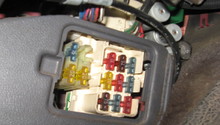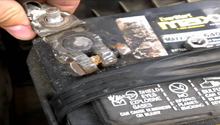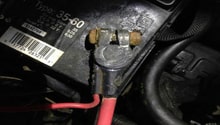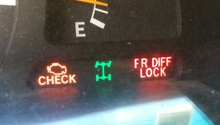Toyota Tundra: Why is My Battery Not Charging?
One of the most common electrical issues a car can have is a battery that won't charge. Find out some common causes below.
This article applies to the Toyota Tundra (2000-Present).
Your battery is essential to start your car and to run your accessories in the car, such as your radio. Unfortunately, batteries can go bad and will randomly stop working or you might start to notice slow starts. Fortunately, batteries are easy to replace and can be done with simple tools and some common safety precautions. Your battery's size will depend on the options your truck comes with, so make sure you check under you hood to make sure the replacement is correct if you determine your battery is bad. Although a bad battery is the most common cause of this issue, there could be other options like a bad alternator or wiring problems. Find out how to diagnose your issue and get your truck back on the road fast!
Step 1 – Check your battery's health
Over time, your battery's ability to hold a charge degrades.
Your battery might not be able to hold a charge anymore due to the elements inside wearing out. Fortunately, most local auto parts stores can test your battery for free. They do this by running it through an automated test procedure that tests the battery's capacity to hold a charge and its current voltage. This test takes about 30 minutes, so budget that much time. If your battery checks out fine, then proceed on in the article and try to find another possible cause of your issue. If the battery is bad, go ahead and replace it!

(Related Article:How to Replace Battery- YotaTech.com)
Step 2 – Check your alternator
Unfortunately, your alternator is a wear item that will eventually give out and stop charging your battery.
If your battery is fine, your alternator is the next step in diagnosing your charging issue. The alternator charges your battery by using the engine's crank to turn alternator pulley and eventually transfer the charge back to the battery. If your Tundra has a voltage meter, check it. If the car starts and you see that the voltage is significantly higher than 12V, the the alternator is working by charging the battery. If it stays at 12V, then this is displaying the battery voltage, which will eventually drain and your car will not be able to start. If you can't tell if your alternator is bad from the above steps, you can get it tested at an auto parts store and they will determine if it is bad for you. If your alternator is good, then something is wrong with your wiring most likely. Check out some causes in the next step.
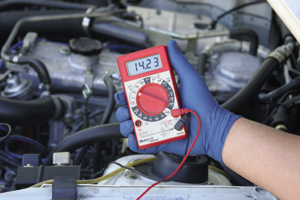
Step 3 – Check your wiring and connections
Your wiring could be corroded or making poor contact, causing your battery's voltage to not be transmitted.
Unfortunately, finding wiring woes can be tedious, but start with the easiest connections like the battery terminals and main ground wire. The battery posts and terminals can corrode over time, so it is a good idea to check for corrosion and clean if needed. Of course, make sure you never touch positive and negative connections together and do everything with some common sense. If that makes no difference, then trace down the ground strap. The other common causes of wiring issues are bad ground connections. Check Figure 4 for a guide of the 22RE ground connections and make sure they all look good. Hopefully, your charging issue should be fixed; if not, consult a professional!
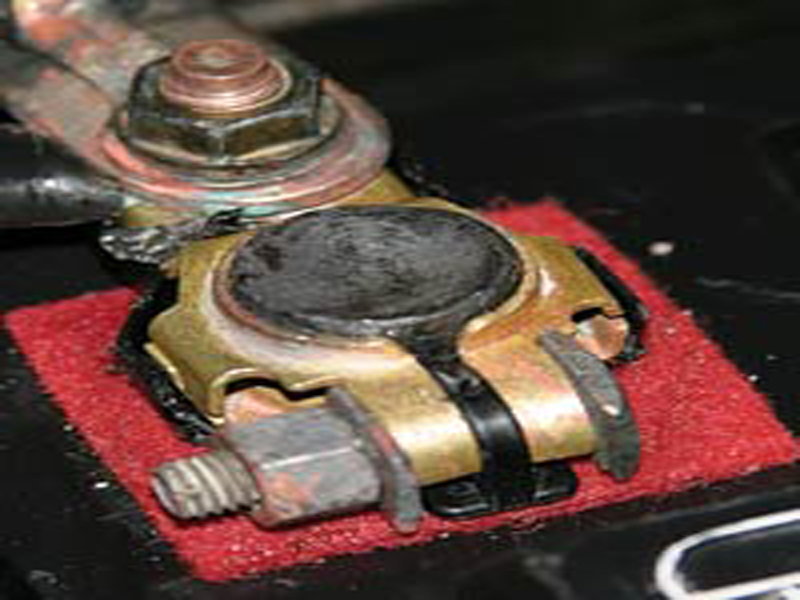
Figure 3. Battery terminal corrosion. 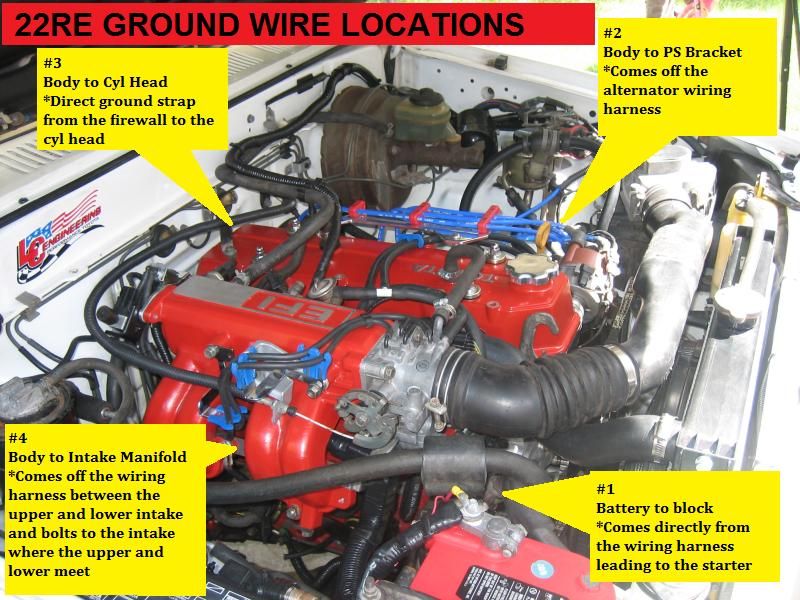
Figure 4. Ground wire guide.
Related Discussions
- Battery Not Charging Alternator Good - YotaTech.com
- Jump Started Dead Battery Now No Idle - YotaTech.com
- Toyota Sequoia Electrical Problem -YotaTech.com

